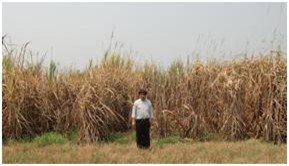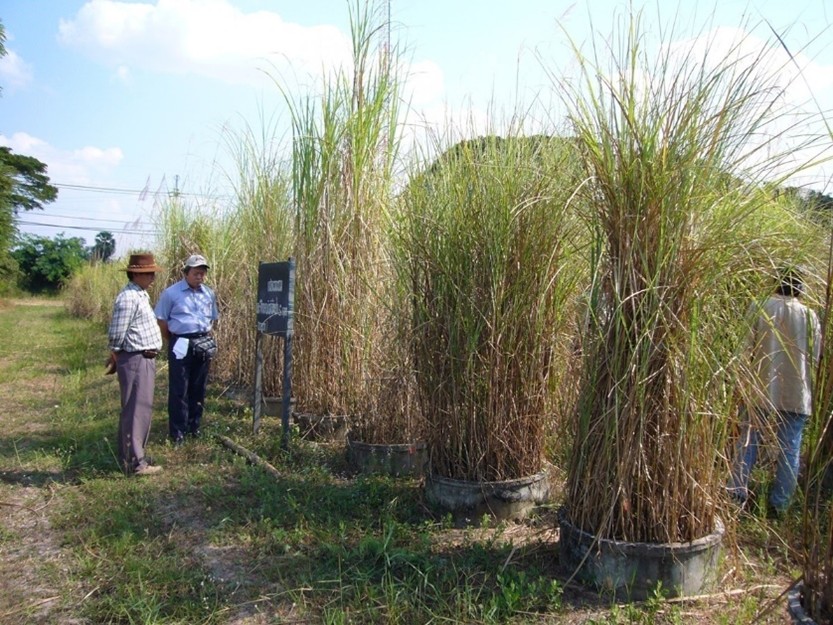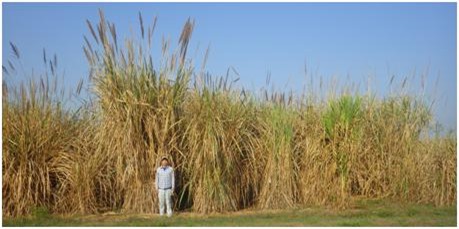JIRCAS- Sugarcane wild germplam Database

JIRCAS- Sugarcane wild germplam Database
The JIRCAS- Sugarcane germplam database is open-access database providing information relating to the morphological and agronomic characteristics of Saccharum spontaneum and Erianthus germplasm in Thailand. These morphological and agronomic characteristics were characterized and evaluated as part of the JIRCAS sugarcane breeding project conducted by JIRCAS and the Khon Kaen Field Crops Research Center (KKFCRC) in Thailand. This database was developed to enhance the utilization of the wide genetic diversity of S. spontaneum and Erianthus germplasm for the purposes of sugarcane breeding, research work, and biomass utilization in Thailand and other countries.
Sugarcane breeding project in JIRCAS
Sugarcane breeding efforts aimed at enhancing productivity and adaptability to adverse environments have been limited by the narrow genetic diversity of existing breeding materials. To address these challenges, the use of wild germplasm is viewed as beneficial due to its potential for higher biomass productivity and improved adaptability to adverse environments.
The sugarcane industry in Thailand is increasingly utilizing bagasse-based bioenergy production to reduce CO2 emissions. However, Northeast Thailand, the largest sugarcane-producing region, is experiencing low yields in ratoon cultivation due to severe dry seasons. JIRCAS and KKFCRC have focused on sugarcane wild germplasm native to Thailand, such as Sacchetum spontaneum and Erianthus, and have engaged in international collaborative research on developing “scientific information and basic breeding techniques” to enhance the utilization of the wild germplasm for sugarcane improvement in Thailand since 1997. In our project, we have collected over 300 accessions of S. spontaneum and over 150 accessions of Erianthus from all over Thailand and have developed basic information and breeding techniques to promote the use of these germplasm.
To utilize sugarcane wild germplasm effectively for breeding, it is essential to investigate genetic diversity and identify useful breeding materials. Although sugarcane wild germplasm has been collected mainly in Asian countries, there is little public information about the characteristics of the collected germplasm and only limited use of the germplasm for breeding. Through the publication of this database, we aim to enhance global sugar and energy production by enhancing the utilization of wild germplasm in sugarcane breeding, research, and biomass utilization, particularly in Thailand and other countries.
Acknowledgements
We would like to express our sincere thanks for the support and contribution of all the members and collaborators in the development of this database under the JIRCAS-KKFCRC collaborative sugarcane project.
- Khon Kaen Field Crops Research Center, Department of Agriculture, Thailand
- Werapon Ponragdee, Amarawan Tipayawat, Sangdaun Chanachai, Taksina Sansayawichai, Rianthong Pansaita, Peaingpen Sarawat, Somsit Juntarak, Jiraluck Phoomthaisong
- Japan International Research Center for Agricultural Sciences (JIRCAS) (https://www.jircas.go.jp/en)
- Akira Sugimoto, Shuichiro Tagane (currently University of Kyusyu), Shinichi Tsuruta, Masakazu Hirata, Yasuteru Shikina, Koji Yamato, Yuto Hateruma, Mitsuru Kyan, Naomi Makiya, Maki Hoshi, Takanori Hayashi, Satoru Muranaka, Takeshi Kano, Kazuo Nakashima, Miyuki Iiyama
- University of Tsukuba, Japan (https://www.tsukuba.ac.jp/en/)
- Hisayoshi Hayashi
- D-blauer Strom LLC, Japan
- Yuki Hasunuma
JIRCAS sugarcane breeding project
Yoshifumi Terajima, Hiroko Takagi, Shotaro Ando, Shinsuke Yamanaka




